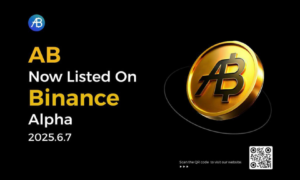Are you tired of all the uncertainty surrounding traditional currencies? Looking for a more stable and secure investment option in today’s ever-changing financial landscape? Well, look no further! We’ve got just the solution for you – Binance USD (BUSD), one of the most promising stablecoins out there. In this blog post, we’ll delve deep into the world of stablecoins and explore why BUSD may be your safest bet yet. Whether you’re a seasoned investor or someone new to the crypto space, join us as we navigate through this exciting realm together!
Introduction to Stablecoins
Stablecoins are a relatively new concept in the world of cryptocurrency, but they have quickly gained traction and become a popular investment option for crypto enthusiasts. In simple terms, stablecoins can be defined as cryptocurrencies that are designed to maintain a stable value against a specific asset or basket of assets.
Understanding Binance USD (BUSD) and How it Stands Out Among Other Stablecoins
Binance USD (BUSD) is a regulated and fully collateralized stablecoin developed by Binance, one of the world’s leading cryptocurrency exchanges. It was launched in September 2019 and has quickly risen to become one of the most popular stablecoins in the market.
But what exactly is Binance USD and how does it differ from other stablecoins? In this section, we will delve deeper into understanding BUSD and its unique features that make it stand out among other stablecoins.
Stablecoins are digital assets designed to maintain a stable value, usually pegged to a fiat currency such as the US dollar. They offer the benefits of cryptocurrencies while minimizing their volatility, making them an attractive option for traders and investors. However, not all stablecoins are created equal. Some have faced controversies regarding their stability and backing reserves.
One of the main distinguishing factors of BUSD is its regulatory compliance. Unlike many other stablecoins that operate outside traditional financial regulations, BUSD is backed by U.S dollars held in FDIC-insured bank accounts approved by the New York State Department of Financial Services (NYDFS). This level of oversight provides users with reassurance about the transparency and security of BUSD’s reserves.
Another prominent feature of BUSD is its partnership with Paxos Trust Company, a trust company regulated by NYDFS. Paxos acts as a fiduciary for BUSD’s issued tokens, ensuring that each token is backed on a 1:1 ratio with US dollars held in reserve . This means that for every BUSD in circulation, there is an equivalent amount of US dollars held in reserve, providing users with a reliable and stable investment option.
Additionally, Binance periodically publishes its monthly audit reports by independent accounting firms to maintain transparency and trust among users. These reports show the confirmation of BUSD’s reserves, reassuring users about the stability of their investments.
BUSD also offers fast transaction speeds and low transaction fees compared to other stablecoins in the market. Its integration with the Binance ecosystem allows for quick and seamless transfers between different cryptocurrencies, making it convenient for traders and investors.
Furthermore, BUSD provides an added layer of liquidity for Binance users. As one of the leading exchanges in terms of trading volume, Binance offers a wide range of trading pairs against BUSD, allowing for easy conversion into other cryptocurrencies or fiat currencies.
Benefits of Investing in BUSD
BUSD (Binance USD) is a popular stablecoin that has gained significant traction in the cryptocurrency market. As more and more investors are turning to stablecoins as a way to mitigate risks associated with volatility, the demand for BUSD has been on the rise. In this section, we will explore the various benefits of investing in BUSD and why it may be a good option for your portfolio.
1. Stability and Security
One of the primary benefits of investing in BUSD is its stability. As a stablecoin pegged to the US dollar at a 1:1 ratio, its value remains relatively constant regardless of market fluctuations. This means that investors can enjoy a level of stability not offered by other cryptocurrencies, such as Bitcoin or Ethereum.
Additionally, BUSD is backed by reserves held by Paxos Trust Company, reducing concerns about its security and potential risks associated with holding traditional fiat currencies.
2. Lower Transaction Fees
Compared to traditional financial institutions, transactions made with stablecoins like BUSD come with significantly lower fees. Binance charges only 0.10% transaction fees for trades involving BUSD, making it an affordable option for frequent traders.
3. Fast Settlements
Due to its nature as a cryptocurrency, payments using BUSD are significantly faster compared to traditional bank transactions which often take days to process. With BUSD, funds can be sent across borders almost instantly without any intermediary involvement.
Potential Risks of Investing in BUSD
As with any investment, there are potential risks associated with investing in Binance USD (BUSD). While BUSD is known for its stability and security, it is important to be aware of these potential risks before making a decision to invest. In this section, we will discuss the various risks associated with BUSD and how you can navigate them.
1. Cryptocurrency Market Volatility:
One of the biggest risks of investing in BUSD is the inherent volatility of the cryptocurrency market. While BUSD itself may be stable, its value is still tied to other cryptocurrencies such as Bitcoin and Ethereum. These underlying assets can experience significant price fluctuations, which can directly impact the value of BUSD. Therefore, it is important to keep an eye on the overall market trends and make informed decisions about buying or selling BUSD.
2. Centralized Nature:
Another risk of investing in BUSD is its centralized nature. Unlike decentralized stablecoins like DAI or USDC where funds are held by a smart contract, BUSD is backed by traditional financial institutions and held in centralized bank accounts. This means that if there were any issues with these institutions or their accounts, it could potentially affect the stability and availability of your invested funds.
3. Counterparty Risk:
Similar to traditional banking systems, there is always a counterparty risk when investing in stablecoins like BUSD. This means that if the issuer (in this case Binance) were to go bankrupt or face financial difficulties, your investment could be at risk as well. While Binance is a reputable and well-established exchange, this risk should not be ignored.
4. Regulatory Risks:
The cryptocurrency space is still relatively unregulated, and changes in regulations could impact the value or availability of BUSD. For example, if regulators were to ban or restrict the use of stablecoins, it could have an adverse effect on BUSD’s price and demand.
5. Potential for Error:
As with any technology, there is always a possibility for human error or technological malfunction. In the case of BUSD, this could mean errors in its smart contract code or issues with its underlying blockchain technology. While these risks may be minimal, they are still worth considering before investing in BUSD.
6. Lack of FDIC Insurance:
Unlike traditional bank deposits which are insured by the FDIC (Federal Deposit Insurance Corporation) up to $250,000 per account, stablecoin investments like BUSD do not have this same level of protection. This means that if anything were to happen to Binance or their affiliated institutions holding BUSD funds, you may not have any recourse to recover your investment.
Comparing BUSD with Other Popular Stablecoins such as Tether and USD Coin
Stablecoins, as the name suggests, are a type of cryptocurrency that is designed to have a stable value. They aim to minimize the volatility often associated with other cryptocurrencies and provide users with a secure store of value. In recent years, stablecoins have gained popularity for their stability and potential use in everyday transactions.
Binance USD (BUSD) is one such stablecoin that has gained traction within the crypto community. Launched in 2019 by Binance, one of the largest cryptocurrency exchanges in the world, BUSD aims to offer a reliable and secure alternative to traditional fiat currencies. However, it is not the only stablecoin available on the market. In this section, we will compare BUSD with other popular stablecoins like Tether (USDT) and USD Coin (USDC).
Tether (USDT):
Tether is currently the most widely used stablecoin in existence. Pegged at a 1:1 ratio with the US dollar, it was first launched in 2014 under its original name “Realcoin.” However, Tether has faced criticism over transparency issues and concerns about its actual reserves backing up its peg.
In contrast to BUSD, which runs on both Ethereum blockchain and Binance Chain network, Tether primarily operates on Omni Layer Protocol built on top of Bitcoin’s blockchain. This means that Tether transactions can take longer to process compared to BUSD transactions.
Another major difference between BUSD and USDT lies in their reserve systems. While USDT claims to be backed 1:1 by reserves of fiat currencies, the exact composition and locations of these reserves are not publicly disclosed. On the other hand, BUSD undergoes regular audits from a top accounting firm to ensure that for every BUSD in circulation, there is an equivalent amount of USD held in reserve.
USD Coin (USDC):
Similar to BUSD, USD Coin (USDC) is also a stablecoin that is pegged 1:1 with the US dollar. USDC was created by Circle and Coinbase in 2018, making it relatively new compared to Tether and BUSD.
One main difference between USDC and BUSD lies in their issuing entities. While Binance holds the majority stake of BUSD’s issuer, Paxos Trust Company is the sole issuer of USDC. This could potentially impact the stability of each stablecoin as different companies may have varying policies and practices when it comes to maintaining their reserves.
Another difference between BUSD and USDC lies in their token supply limits. While BUSD has a fixed supply limit of 200 million tokens, USDC has no fixed supply limit and can be minted or burned based on market demand.
Market Trends and Predictions for BUSD’s Future Performance
Market trends and predictions are always important factors to consider when making any investment decision, especially in the volatile world of cryptocurrency. In this section, we will take a closer look at the current market trends for Binance USD (BUSD) and make some predictions for its future performance.
1. Rising Popularity: One of the most notable market trends for BUSD is its rising popularity. As a stablecoin backed by one of the largest cryptocurrency exchanges, Binance, BUSD has gained significant traction in the crypto community. This growing popularity can be attributed to its stability and trustworthiness as well as its seamless integration with other Binance products.
2. Increasing Adoption: Along with its rising popularity, BUSD’s adoption rate has also been steadily increasing. More and more merchants are starting to accept BUSD as a form of payment, which further solidifies its position as a reliable stablecoin. The rise in adoption is also driven by Binance’s efforts to promote BUSD use in various industries such as travel, e-commerce, and gaming.
3. Stable Value: As a stablecoin pegged 1:1 to the US dollar, BUSD has maintained a consistently stable value since its launch. This stability is highly attractive to investors looking for a digital asset that can function like traditional currency without being affected by extreme price fluctuations common among other cryptocurrencies.
Tips for Safely Investing in BUSD
When it comes to investing in any type of currency, whether it’s traditional or digital, safety should always be a top priority. By following these tips, you can ensure that your investment in Binance USD (BUSD) is secure and protected.
1. Do Your Research: Before investing in any stablecoin, it’s important to do thorough research on the company behind it. In the case of BUSD, it is issued by Binance, one of the largest cryptocurrency exchanges in the world with a strong track record of security and reliability. Additionally, make sure to read through their whitepaper and familiarize yourself with their business model and technology.
2. Diversify Your Investments: It’s never wise to put all your eggs in one basket when it comes to investments. This also applies to stablecoins like BUSD. Consider diversifying your investments across different stablecoins or even different asset classes such as stocks or real estate.
3. Keep an Eye on Market Conditions: Stablecoins, including BUSD, are designed to maintain a steady value pegged to a fiat currency like USD. However, market conditions can sometimes affect this stability. Keep an eye on the overall cryptocurrency market and news that may impact its stability before making any major investment decisions.
4. Use Reputable Exchanges: When buying or selling BUSD, make sure you are using reputable exchanges such as Binance or other regulated platforms recognized for their security measures and compliance standards.
Conclusion
In conclusion, stablecoins provide a promising alternative to traditional cryptocurrencies with their relatively stable value and backing of real-world assets. Binance USD, in particular, has proven to be a safe investment option with its high levels of transparency and security measures. However, as with any form of investment, it is important to do thorough research and understand the risks involved before making any decisions. We hope this article has provided some insights into the world of stablecoins and helped you determine if Binance USD is the right choice for your portfolio.



































